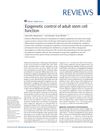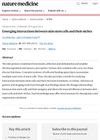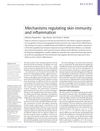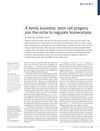Cultured Human Foreskin as a Model System for Evaluating Ionizing Radiation-Induced Skin Injury
August 2022
in “
International Journal of Molecular Sciences
”
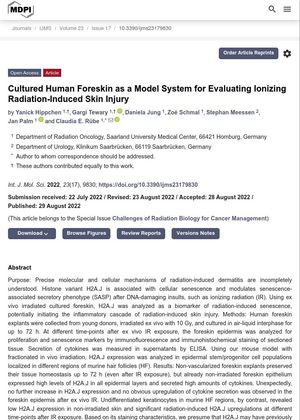
TLDR Human foreskin does not show aging or reduced cell growth after radiation, and H2A.J is not a good marker for radiation-induced aging.
The study used cultured human foreskin to investigate the effects of ionizing radiation-induced skin injury. The histone variant H2A.J was used as a biomarker for radiation-induced senescence. However, the study found that H2A.J expression in the foreskin is not dependent on senescence induction after ionizing radiation exposure, suggesting it's not a feasible marker for radiation-induced senescence. The study also found that the foreskin's proliferative capacity is not affected by ionizing radiation doses. The foreskin samples from 12 young donors aged 1-9 years showed varying inflammatory responses to ionizing radiation exposure. The study suggests that the increased H2A.J expression after ionizing radiation exposure may reflect an epigenetic regulation mechanism inducing an epidermal differentiation process in keratinocytes.

